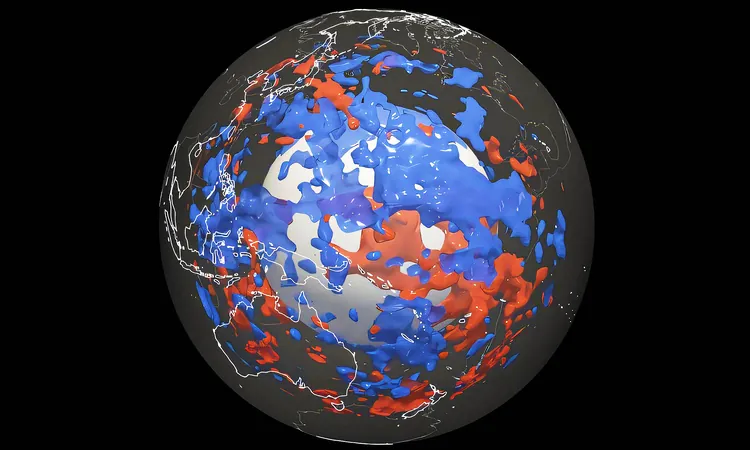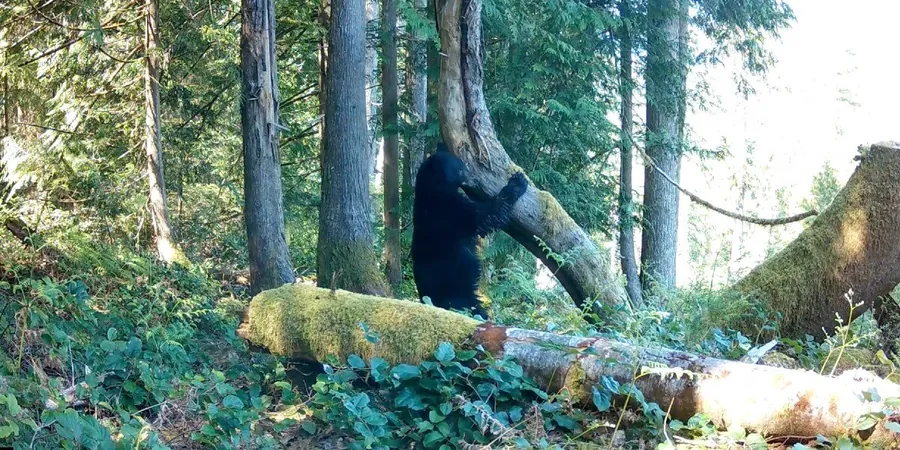
Ancient Secrets Unveiled: 'Sunken Worlds' Discovered Beneath the Pacific Ocean!
2025-01-11
Author: Charlotte
A groundbreaking revelation is shaking up our understanding of Earth's interior!
Scientists have recently discovered unexpected structures lurking beneath the Pacific Ocean in the planet's mantle, leading to a dramatic reconsideration of tectonic plate theories.
Many envision the Earth's mantle as a simple layered cake, with each stratum representing different tectonic plates. However, in reality, the mantle is a complex network filled with surprises waiting to be uncovered. While seismologists have traditionally relied on specific types of earthquake waves for insight into Earth’s subsurface, an innovative method known as full-waveform inversion is now painting a much clearer and more detailed picture.
Unraveling Earth’s Mantle Mysteries
The mantle, a thick layer of rock that spans approximately 1,800 miles (2,900 kilometers) between the Earth's crust and core, constitutes about 84% of the planet's volume. Composed primarily of silicate minerals rich in iron and magnesium, this mostly solid layer resembles a slow-moving fluid over extended periods. This movement drives the ever-changing tectonic plates above, resulting in earthquakes, volcanic activity, and continental drift.
The new technique, full-waveform inversion, enables scientists to analyze every type of seismic wave produced by earthquakes instead of merely focusing on one. This comprehensive approach has revealed anomalies previously hidden in the lower mantle, including unexpected remnants of tectonic plates in regions where no historical subduction events were recorded.
The Unexpected Anomalies
Thomas Schouten, a doctoral student from the Geological Institute of ETH Zurich, spearheaded this shocking research alongside colleagues from Caltech. Their findings indicate that these peculiar features, observed beneath the western Pacific, contradict existing tectonic timelines suggests that old plate fragments shouldn't be present in such locations.
"This indicates that these 'zones' in the Earth’s mantle might be far more widespread than we ever imagined," Schouten commented, moving the scientific community towards a reconsideration of how tectonic plates evolve and relocate.
The implications of this discovery are manifold. The anomalies could represent ancient silica-rich pockets or iron-rich accumulations, potentially reshaping our understanding of Earth's mantle composition. Could there be more ‘lost’ fragments waiting to be uncovered beneath oceans and continents? These questions now hang in the balance as scientists strive to unlock the mantle’s secrets.
Why This Discovery Matters
The findings may have considerable implications for our understanding of plate tectonics and the dynamics of Earth's geological processes. If these hidden structures are confirmed as commonplace, it could redefine theories about heat movement through the mantle, influencing convection patterns and even the formation of mantle plumes.
Geoscientists are now turning to additional datasets and integrating electromagnetic signals and mineral physics data, seeking to clarify the origins of these anomalies. Understanding whether these pockets stem from ancient processes or recycled materials could revolutionize the way we perceive Earth’s inner workings.
The Quest Continues
As improvements in supercomputing enhance our ability to analyze the planet's depth, the quest for knowledge about Earth’s complex structure is far from over. Together, scientists hope to refine their models and gain insights into the mantle's abundance of hidden complexities.
With every discovery, we are reminded that geoscience is an evolving field, continually reshaping our understanding of the Earth beneath our feet. Keep an eye out for further revelations from the depths of our planet—who knows what other astonishing secrets await us!









 Brasil (PT)
Brasil (PT)
 Canada (EN)
Canada (EN)
 Chile (ES)
Chile (ES)
 Česko (CS)
Česko (CS)
 대한민국 (KO)
대한민국 (KO)
 España (ES)
España (ES)
 France (FR)
France (FR)
 Hong Kong (EN)
Hong Kong (EN)
 Italia (IT)
Italia (IT)
 日本 (JA)
日本 (JA)
 Magyarország (HU)
Magyarország (HU)
 Norge (NO)
Norge (NO)
 Polska (PL)
Polska (PL)
 Schweiz (DE)
Schweiz (DE)
 Singapore (EN)
Singapore (EN)
 Sverige (SV)
Sverige (SV)
 Suomi (FI)
Suomi (FI)
 Türkiye (TR)
Türkiye (TR)
 الإمارات العربية المتحدة (AR)
الإمارات العربية المتحدة (AR)